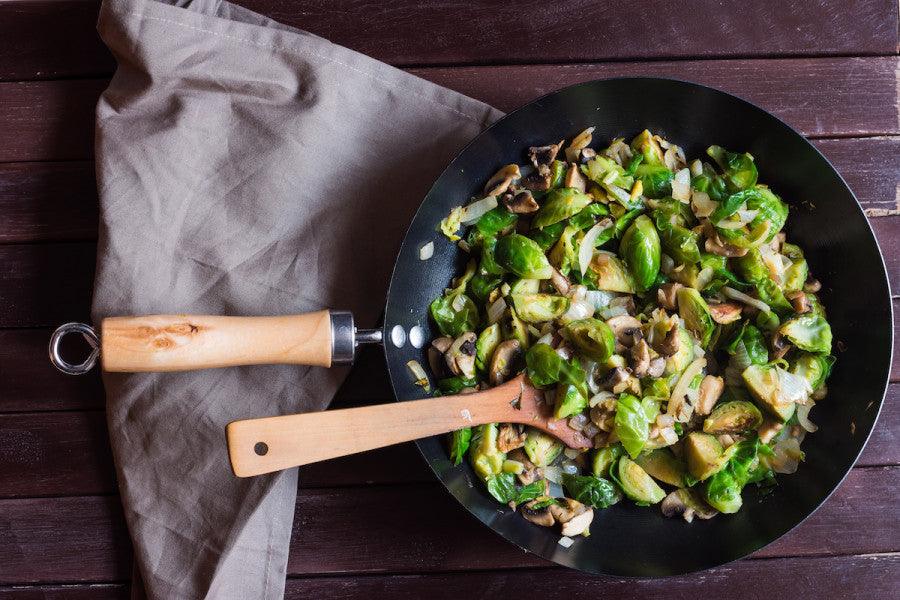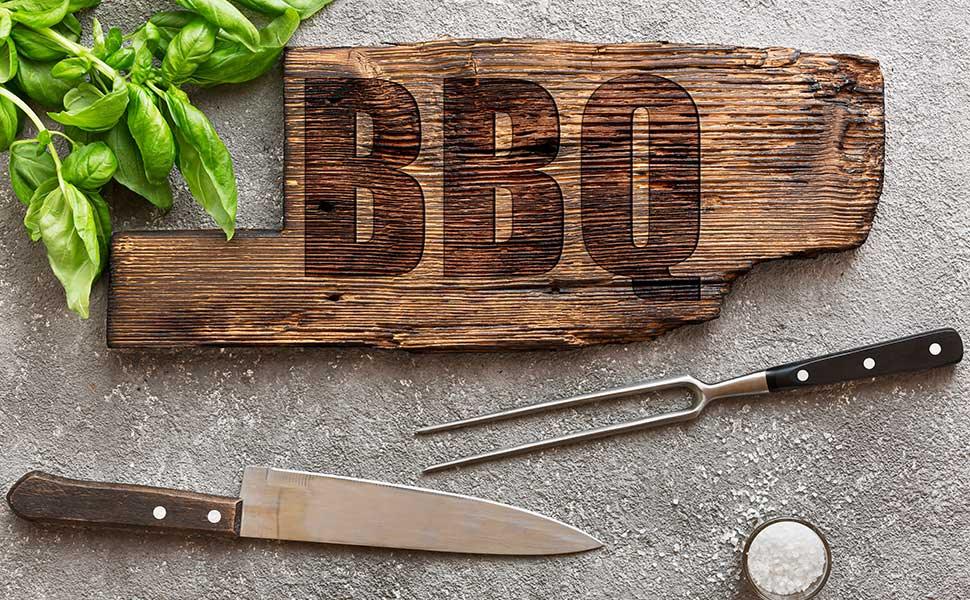TABLE OF CONTENTS
Do you want to know the sauté cooking technique? Are you looking for step-by-step instructions to make it easy? If yes, you are in the right place. Sautéing technique is preferred since it helps to prepare healthy and delicious food. Also, you will need only a cooking pan and oil to start preparing. This technique will transfer heat from the pan to your food. Also, the thin coating of the oil will prevent sticking and moisturize the food.
If you are new to sautéing, you can go through the following article. We will help with step-by-step instructions. Additionally, we will discuss oil and pan. After going through this article, you can confidently sauté your food.

What's the Difference Between Sautéing and Frying?
Frying is a broad concept that includes sautéing. Frying covers different cooking styles, including shallow-frying and deep-frying. If you consider shallow or deep-frying, you will have to use more oil. Stir-frying and oven frying will also come in the category of frying. When some processes require more oil, others will involve a wok and higher heat. But sautéing is a healthy way of frying. The process will involve a small amount of cooking oil and heating over medium-high heat.

What You Need to Sauté
You will need a pan and cooking oil for sautéing. Skillet is a perfect choice since it will have rounded edges. In addition to these, you will need a spatula. Any other similar cooking tool will also serve the purpose. Moreover, you can use a sauté pan in the place of a skillet. Choose the one based on availability.
Even if you need only three things to sauté, you can impact the outcome with wrong picks. Therefore, you will have to ensure that you have the right cooking tools and oil.
Pan
You can choose from the PTFE or stainless steel material. However, many people prefer stainless steel material since it is non-reactive. This unique quality makes it the best choice for acidic foods. Also, stainless steel is easy to maintain and easy to clean. You can go with PTFE non-stick while cooking sticky foods. We can take the example of pancakes, eggs, or potatoes. Moreover, non-stick pans are easy to clean. You can clean them with your hand.
Oil
Now you know about the pan. Next, we will cover the oil. You will have to choose the right oil to get the best result. While using any oil, you will have to check the smoke point. This is the point that causes any oil burn off. When your recipe requires high heat, you can choose any oil with a high smoke point. We can take the example of butter.
It has a lower smoke point compared to canola oil or olive oil. Whenever there is a doubt, you can use neutral flavor oils. Make sure that the oil has a high smoke point.

How to Choose the Right Pan for Sautéing
From the above, you might have an idea about pans. Always go with quality products to get a durable result and better efficiency. You can use a sloped side (skillet) pan or a straight side (sauté) pan. Make sure that the pan is big enough to cook your food conveniently. You will have to sauté in a single layer, and you cannot manage with a small pan. Sautéing means the food should have direct contact with the pan. If you add more food, it will not get direct heat contact. Hence, you cannot expect the benefits of sautéing. Also, you can consider using a heavy-bottomed pan. That will distribute the heat evenly.
With a sauté pan, you can get maximum surface area. A sauté pan can be perfect for a large amount of food. You can go with the stainless material to get better efficiency and durability. If you use a cast-iron skillet, it might take longer to heat up. But it will maintain the heat for a long. Therefore, it can be perfect for steak. However, non-stick pans are ideal for delicate foods. But you should avoid using them for browning.

How to Sauté Step by Step
You will find sautéing easy if you know the process. Once you know how to sauté, you can enjoy sautéed vegetables and beef. We will cover four easy steps for sautéing in the following.
Step One: Heat Pan
First, you will have to heat the pan, and then you need to add oil to it. You can use medium-high heat while sautéing with stainless steel material. If you have a non-stick pan, you can consider medium heat. While using the stainless steel material, heat a dry pan. Allow it to heat for a minute, and then you will have to add oil. But while using the non-stick material, you can add a little oil and then turn the heat on.
If you do not know when to add oil while using stainless steel, you can observe the pan. If the water rolls around the pan, you can add oil. While adding oil, make sure that it is enough to coat the surface. However, you will have to avoid putting in more oil. The benefit of sautéing is less oil. Your food should not float or swim in oil. Put the oil and swirl it to cover the entire bottom surface.
While using the stainless steel material, you need to wait for a few seconds. Allow the oil to heat up properly. Both the pan and oil need to be hot, and then you can add food. Otherwise, the cooking oil will shimmer.
Step Two: Add Food
You will have to use a small amount of the oil in sautéing. It will make your food healthy and delicious. Also, cut your food into pieces. You can choose the size based on your recipe. Once the pan is hot, you can add the food and distribute it evenly. Make sure that the food is in a single layer on the surface. You will have to avoid adding too much food to the pan. It will cause overcrowding. Overcrowding will result in rapid cooling, and it might impact the efficiency of your pan. As a result, the food might stick to the pan.
You will have to follow the same technique for sautéing vegetables and chicken breast. However, the cooking time will not be the same.
Step Three: Stir Food
You can flip the food to ensure even distribution. Also, you can use rounded edges pans for perfect sautéing. Moreover, it will allow you to roll over the food using one hand. Many of us flip the food while cooking. However, this is the easiest way to distribute food evenly on the surface.
If you feel that there is more food on one side, you can hold the handle. Tilt the pan slightly away and flick it up fast. It should feel like your food is jumping in the air, and you will have to catch it in the sauté pan again. The objective is to move the food and prevent sticking.
However, stir-frying is different from sautéing. Hence, you will have to avoid over-stirring. You need to cook each side to brown. The browned sides of some vegetables, including bell peppers, zucchini, Brussels, and cauliflower, will give the best flavor. Therefore, you will have to allow your food to cook, instead of stirring constantly. Wait for your food to cook to brown, and then you will have to flip it. In brief, you will have to flip a few times.
Step Four: Remove It When Brown or Cooked
Sautéing is easy, but you will have to know when your food is ready to eat. You will have to use your nose, eyes, and sense to check your food while sautéing. Also, you will have to avoid under-cooking or over-cooking. It is worth mentioning that sautéing is a quick-cooking technique. It will take only a few minutes. Hence, you will have to observe to avoid overcooking. Moreover, your preference will have a role.
While sautéing vegetables, you might want them to be a little crunchy. Therefore, you will have to avoid overcooking to maintain the moisture. Overcooking will make your food mushy. We can take the example of onions. If you overcook an onion, it will be soft. However, you can sauté to make it crunchy. You can add crunchy onions to your savory side dish. The same is about garlic. You can make it slightly brown without burning. If you burn the food, it will impact the taste.
Follow a simple rule. Add a single food layer to the pan, stir your food a few times, and avoid overcooking or undercooking. If you follow these, you will love the outcome and your effort.
Sautéing is the easiest and the best cooking technique that everyone can follow to cook like a pro. You can use this technique to prepare some healthy and quick meals. More importantly, you can expect many health benefits since the process will involve a small amount of oil. You can use high-quality cooking tools and oil to make sautéing even easier.






















Leave a comment
All comments are moderated before being published.
This site is protected by hCaptcha and the hCaptcha Privacy Policy and Terms of Service apply.